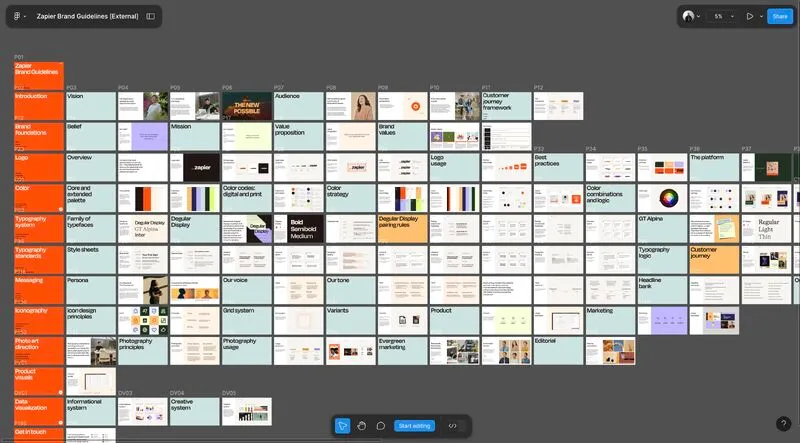100 Page Brand Guide?


For most churches, their brand guidelines could fit on a single sheet of letter-sized paper (if they have brand guidelines at all).
However, I’ve spent enough time in the design industry to know that large companies need brand guidelines which are much richer and more complex.
So, I wasn’t surprised when a tech company called Zapier released their massive, 100-page book of brand guidelines to the public.

Why so extensive? Isn't that overkill, even for a large tech company?
The reason Zapier has such an extensive brand guide is because they have an extensive brand scope.
Let me explain.
Zapuer just has one main logo and their color palette is relatively simple. The complexity comes from all of the different places that branding is going to live.
Let's say you have vacation homes in Hawaii, Alaska, and Texas, and you live in each for a few months out of the year.
You'd probably have different clothes you wear, a different time of day for your walk, and different for guests.
The number of places your brand will live determines how many guidelines you need.
If you’re printing promotional pieces, posting on social media, and creating video content, your church would probably benefit from some basic brand guidelines.
This makes sure each part of your brand gets distilled with instructions and visuals to be straightforward and easy to use (even for someone with very little design experience).
Do you know someone who needs a set of guidelines for their existing logo and branding?
Just in the month of April 2025, I’m offering a brand guidelines creation service for just $299 to any church who is happy with their look, but needs help making it more consistent.
If that sounds like you or a pastor you know, send me an email and I’ll get your church into the queue.